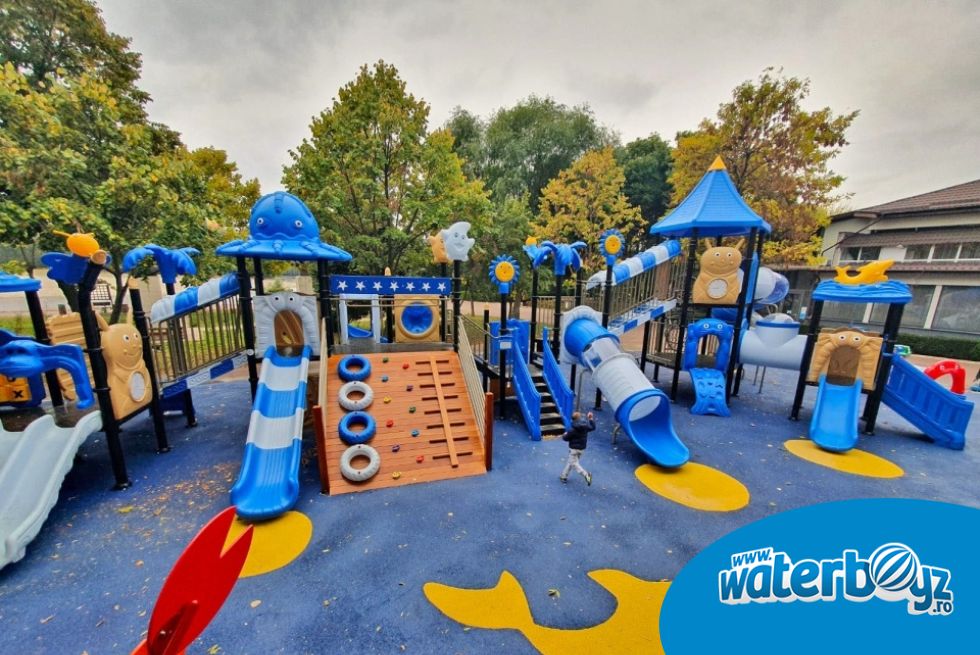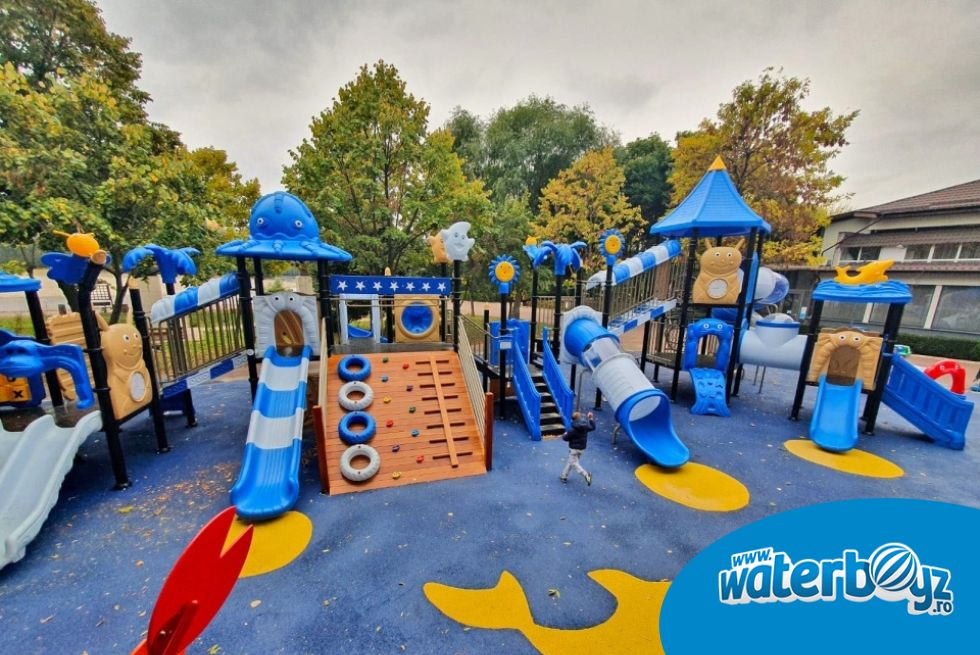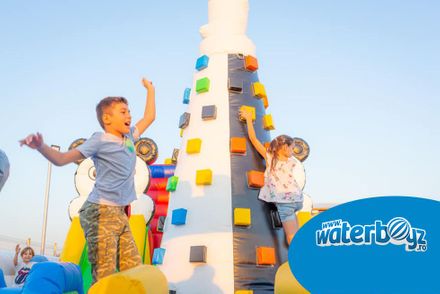Unveiling the Secrets of Crafting the Perfect Playground: Where Safety and Happiness Reign
Discover alongside us the secrets of creating a flawless playground where children feel safe and joyful, exploring the most crucial equipment from the Waterboyz collection. We've prepared an article with essential insights for your decision-making process, tailored to your specific layout plan.
How to Choose the Right Materials for Play Equipment
When it comes to comprehensive playground designs, selecting the appropriate materials is crucial to ensuring children's safety and comfort. When considering the best materials for such equipment, several aspects should be considered:
1. Durability: Materials used for constructing play equipment must withstand wear and weather conditions for extended periods. Galvanized steel, aluminum, and reinforced plastic are popular options for basic structures. Alternatively, thermally or pressure-treated wood (e.g., cedar, hardwood, or tropical wood) can offer eco-friendly alternatives that are visually appealing.
2. Safety: Materials should be non-toxic and free from potential hazards for children. For instance, opting for inflatable outdoor playgrounds over sharp edges or metal components that can become excessively hot under the sun's rays can help prevent unwanted incidents.
3. Sustainability: Eco-friendly and recyclable materials, such as recycled plastic or sustainably sourced wood, are increasingly popular choices for playground setups. These materials have a minimal environmental impact and can contribute to the project's "green" image.
4. Aesthetics: The materials used for play equipment should align with the design and theme of the playground. Natural wood might suit a rustic-themed park, while colorful elements or plastic components could be fitting for an urban play area.
5. Costs: Depending on your budget, material costs can vary. Steel and aluminum might be pricier options compared to plastic, but they offer increased durability and resilience. Assess the cost-quality ratio before making a decision. Feel free to seek our advice to identify the most suitable solutions based on your needs.
Key Equipment in a Children's Playground
1. Climbing equipment is an essential component of playgrounds. Various climbing systems, including slides and elements of varying difficulty levels, can be incorporated. These structures can be developed on multiple levels, both horizontally and vertically. Using such play equipment promotes motor skill development and enhances hand-eye coordination. Moreover, it instills courage and self-confidence in children, allowing them to climb to different heights.
2. Beautiful swings for children are also essential in a playground. Due to their specific dynamics, swings stimulate balance and coordination, providing youngsters the opportunity to interact with peers and develop social relationships. Studies suggest that the motion of a swing can enhance well-being and reduce stress levels.
3. Equipment for nurturing creativity is crucial for encouraging imaginative play and social interaction. Sand areas, interactive panels, and playhouses create an ideal setting for children eager to explore new realms of fun.
4. Various physical activity equipment is necessary to stimulate different types of movement and encourage children to develop strength, agility, and flexibility. Jumping benches, spring riders, parallel bars, carousels, and other similar solutions can be integrated into play areas to sustain children's interest.
5. Rest and relaxation zones are equally important in a playground. Urban benches, tables, and umbrellas can be placed in green areas, offering parents and children a serene oasis and a space to socialize and rest between play activities.


Incorporating Inclusive Equipment for Children with Disabilities in the Playground
Integrating play equipment for individuals with disabilities in a playground is essential to ensure that all children in the community can benefit from the opportunity to interact with their peers. This not only promotes social inclusion but also supports the physical and emotional development of users with mobility challenges. Consult specialists or organizations working with people with disabilities to obtain recommendations and essential advice for making the most suitable equipment choices.
Ensure accessibility and circulation within the playground by installing paved paths, ramps, and railings to facilitate the movement of children in wheelchairs or using other mobility aids. Position these play equipment items near other available features within the area to encourage interaction and cooperation among children during playtime.
In conclusion, creating an ideal playground involves a comprehensive approach, from selecting the most suitable equipment to ensuring safety, accessibility, and maintenance. Such a space should be engaging, stimulating, and above all, provide an ideal environment where all children can enjoy their leisure time together safely.
Contact us: [email protected] | Call now: 0371 788 788




































































































































